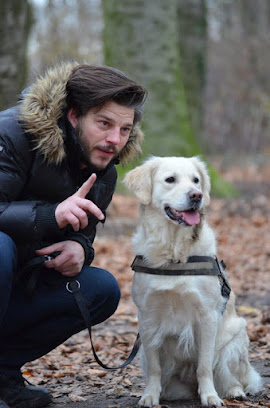Establish a routine
Like babies, puppies do best on a regular schedule. The schedule teaches them that there are times to eat, times to play and times to do their business. Generally speaking, a puppy can control their bladder one hour for every month of age. So if your puppy is two months old, they can hold it for about two hours. Don't go longer than this between bathroom breaks or they’re guaranteed to have an accident.
Take your puppy outside frequently—at least every two hours—and immediately after they wake up, during and after playing, and after eating or drinking.
Pick a bathroom spot outside, and always take your puppy (on a leash) to that spot. While your puppy is relieving themselves, use a specific word or phrase that you can eventually use before they go to remind them what to do. Take them out for a longer walk or some playtime only after they have eliminated.
Reward your puppy every time they eliminate outdoors. Praise or give treats—but remember to do so immediately after they’ve finished, not after they come back inside. This step is vital, because rewarding your dog for going outdoors is the only way to teach what's expected of them. Before rewarding, be sure they’re finished. Puppies are easily distracted and if you praise too soon, they may forget to finish until they’re back in the house.
Put your puppy on a regular feeding schedule. What goes into a puppy on a schedule comes out of a puppy on a schedule. Depending on their age, puppies usually need to be fed three or four times a day. Feeding your puppy at the same times each day will make it more likely that they'll eliminate at consistent times as well, making house-training easier for both of you.
Pick up your puppy's water dish about two and a half hours before bedtime to reduce the likelihood that they'll need to relieve themselves during the night. Most puppies can sleep for approximately seven hours without needing a bathroom break. If your puppy does wake you up in the night, don't make a big deal of it; otherwise they will think it is time to play and won't want to go back to sleep. Turn on as few lights as possible, don't talk to or play with your puppy, take them out and then return them to bed.
Supervise your puppy
Don't give your puppy an opportunity to soil in the house; keep an eye on them whenever they’re indoors.
Tether your puppy to you or a nearby piece of furniture with a six-foot leash if you are not actively training or playing. Watch for signs that your puppy needs to go out. Some signs are obvious, such as barking or scratching at the door, squatting, restlessness, sniffing around or circling. When you see these signs, immediately grab the leash and take them outside to their bathroom spot. If they eliminate, praise them and reward with a treat.
Keep your puppy on leash in the yard. During the house-training process, your yard should be treated like any other room in your house. Give your puppy some freedom in the house and yard only after they become reliably house-trained.
When you can't supervise, confine
When you're unable to watch your puppy at all times, restrict them to an area small enough that they won't want to eliminate there.
Make plans for when you're away
If you have to be away from home more than four or five hours a day, this may not be the best time for you to get a puppy. Instead, you may want to consider an older dog who can wait for your return. If you already have a puppy and must be away for long periods of time, you'll need to:




0 Comments